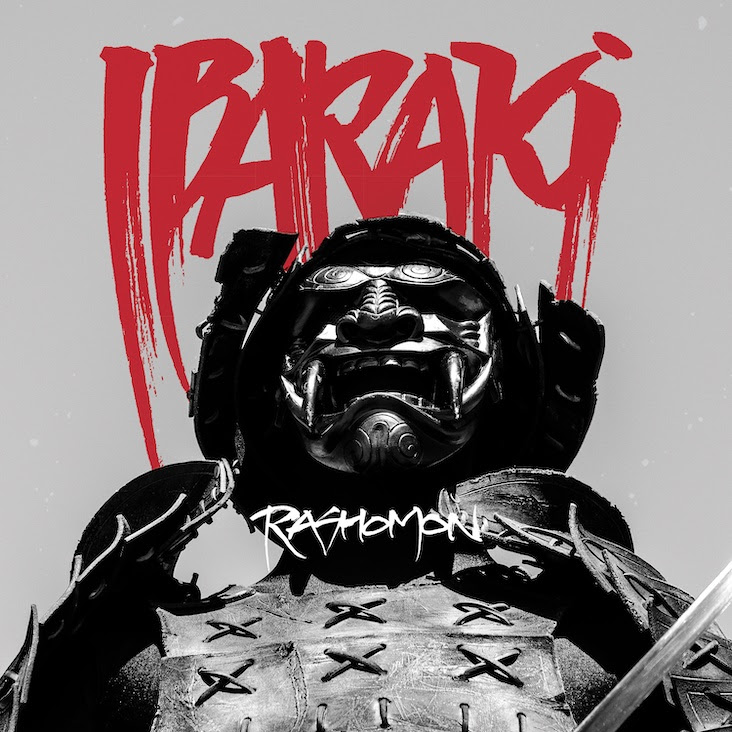Ibaraki: tutti i dettagli di “Rashomon”; guarda il video di ‘Akumu’ con Nergal dei Behemoth

Matthew Kiichi Heafy dei Trivium ha finalmente rivelato tutti i dettagli di “Rashomon”, primo album degli Ibaraki. Nuovo progetto di cui vi avevamo già rivelato i primi dettagli. Contestualmente all’annuncio ha pubblicato anche il video di ‘Akumu’ con Nergal dei Behemoth, che potete vedere di seguito.

TRIVIUM’S MATTHEW KIICHI HEAFY REVEALS LONG-AWAITED IBARAKI ALBUM RASHOMON SHARES VIDEO FOR “AKUMU” (FEAT. NERGAL FROM BEHEMOTH) — WATCH
Trivium singer and guitarist Matthew Kiichi Heafy has shared more details about his long-awaited and much-anticipated IBARAKI
project. The project’s debut album Rashomon will be released on May 6 via Nuclear Blast.
Today, the band has shared the video for “Akumu” (Feat. Nergal). Watch it here.
“‘Akumu’ translates to ‘nightmare’ — and with this piece, I encourage the listener to work to find their interpretations of what they feel from the lyrics, music, and the haunting visuals of the music video,” says Kiichi. “I have always been fascinated by Sagazan’s ‘Transfiguration,’ and for years, I have wanted to pay homage to his works with a performance art piece; to finally be able to immerse myself in his style was an intense experience.”
He finishes, “Having Nergal guest in this Ihsahn co-written piece allowed me to combine many of my long-time influences; and when I presented with Nergal of the challenge of translating my lyrics into Polish, it brought the song to another level.”
Last month, Ibaraki offered fans a taste and a tease of the music by sharing the video for “Tamashii No Houkai,” featuring special guest Ihsahn of Emperor fame, who is a core contributor and partner in this project. Watch the video here.
Fans will be able to listen to “Akumu” and “Tamashii No Houkai” by pre-saving here.
Pre-order the album Rashomon on CD, vinyl, cassette, and T-Shirt + CD bundle here.
Ibaraki were recently selected as one of the most anticipated releases of 2022 by Revolver.
RASHOMON TRACK LISTING:
“Hakanaki Hitsuzen”
“Kagutsuchi”
“Ibaraki-Dōji”
“Jigoku Dayū”
“Tamashii No Houkai“
“Akumu” (Feat. Nergal)
“Komorebi”
“Rōnin” (Feat. Gerard Way)
“Susanoo No Mikoto” (Feat. Ihsahn)
“Kaizoku”
ABOUT IBARAKI:
IBARAKI — the name for a terrifying Japanese demon taken from feudal legend and the new project of Trivium’s Matthew Kiichi Heafy — is more than a solo record. It’s the end-result of a journey of an artist finding his voice. Its inspirations include everything from an adoration for the extremes of black metal to the exuberant storytelling of Gerard Way to the adventuresome worldliness of tragic bon viveur Anthony Bourdain. It’s a reflection of Kiichi’s multifaceted interests as well as a profound affirmation of his Japanese-American identity, and one that led him to confront one of his family’s most tragic moments. Like the artist behind it, there is much to the story of Ibaraki and it began with a timid email to one of black metal’s most revered and influential figures.Kiichi, a fan of black metal before he even started Trivium, reached out to label reps for Ihsahn of Emperor, and the artist personally responded. He recalls, “It was so cool to get that nod and it inspired me to start checking some of his solo stuff. He’d just released his own solo record and I’d never heard anything like it — saxophones, clean singing, jazz chords. It was incredible to me. He’s this non-stop inventor. So I started writing in a totally different way.”
The exposure to Ihsahn’s solo work that would inspire the gradual craftsmanship that would eventually become Ibaraki. It was also the beginning of a friendship and creative collaboration that would eventually compel Ihsahn to take a leap of his own into a newfound role as producer on the project. While much of the material for Ibaraki was assembled over those months and years — as much a songwriting process as an exchange of ideas between friends — it wasn’t until the pandemic that the space was created and the idea could really flourish.
“It was very loose,” says Ihsahn. “We just had rough demos for a very long time because we’re arguably pretty busy people, but suddenly, everything was cancelled and we had time on our hands for the first time, so it was like, ‘OK, let’s do this.’ We never got to work in the same room; he’d track guitars and send them to me, I’d run them through my studio and send them back. It was a new way of working, but it was like he was there on the other side of the glass. Matt is a very, very positive energetic and passionate music fan — we have similar attitudes to music and open mindedness. We hit it off, and it’s been really rewarding to me.”
The creative interactions between the pair are the result of a deep trust borne of a commonality of their experience. “We both started our respective bands when we were 13,” Ihsahn says. “We got signed when we were 16. That’s young, and in essence we both found our path in life at an early age. We’ve talked a lot about that and our different experiences with that, because it’s like we know nothing else.”
While material was primarily written by Kiichi, Ihsahn engineered and produced and contributed some song structures, plus Trivium drummer Alex Bent and bassist Paolo Gregoletto and guitarist Corey Beaulieu contributed to various tracks. Ihsahn’s wife Heidi even sampled some natural sounds from the forest near their home and his entire family. Additional guests include the aforementioned Way and Behemoth’s Nergal.
Ihsahn also encouraged Kiichi to seek out new avenues for lyrical inspiration, namely his Japanese heritage. While an array of stories have been told via the tattoos on his body, such as the specific ancient Japanese story of gods, goddesses, and monsters from the Shinto religion taught to him by his mother, he began pouring the stories into lyrics.
While the rich mythology and folklore of Japan that would give IBARAKI its unique aesthetics and influences, it also provides the artist with the catalyst to contemplate his own identity and to consider how recent tragedies stateside have highlighted the need for better representation in metal.


